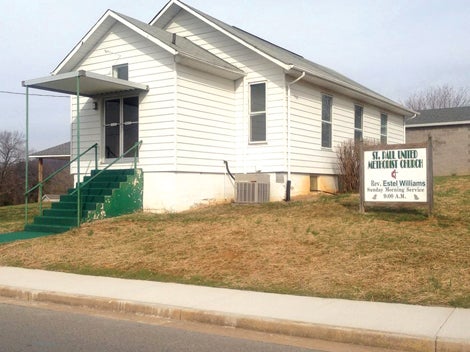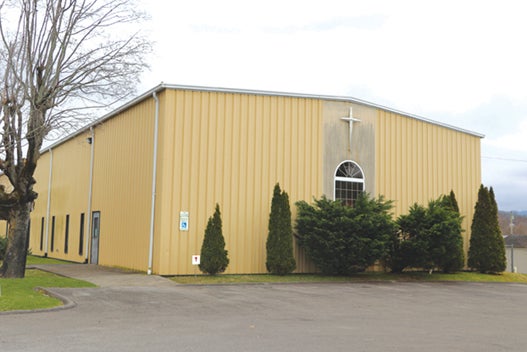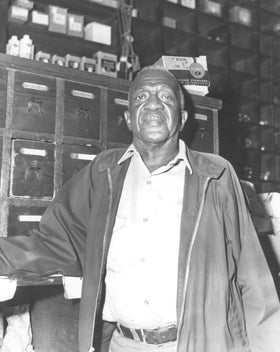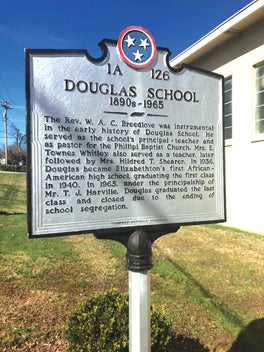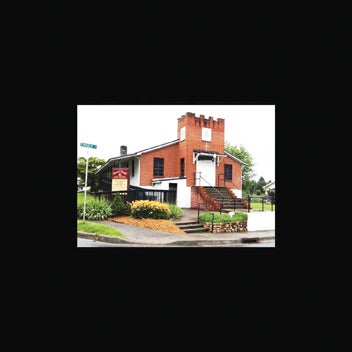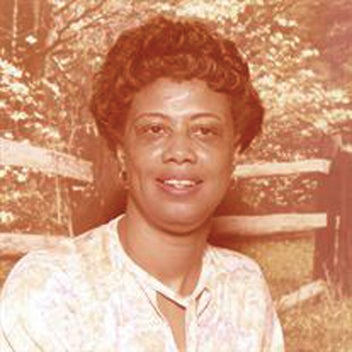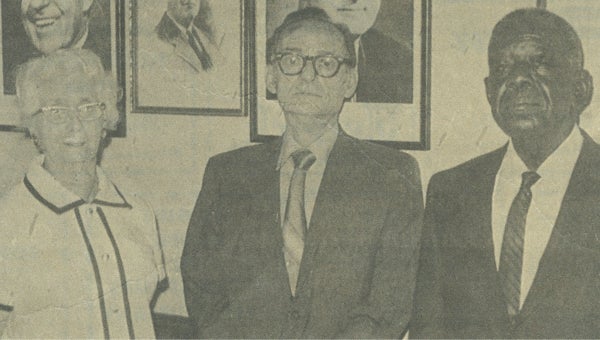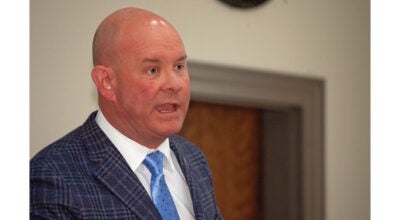Many from Elizabethton’s Black community made their mark and left us memories
Published 8:12 am Monday, February 17, 2020
Black History Month is celebrated each February and is an annual celebration of achievement by African-Americans and a time for recognizing the central role of blacks in U.S. history.
Joe Penza, archivist at the Elizabethton-Carter County Public Library, recently noted that the library does not have a lot of material on Elizabethton’s Black community, but was elated when material donated by the late Dan Crowe’s family included a yearbook from Elizabethton’s Douglas School.
The Douglas School served Elizabethton as well as Mountain City students during the segregation years. Local historian Frank Merritt noted in his “More History of Carter County” that there were black schools in operation as early as 1884 in Roan Mountain, Happy Valley, Gap Creek, Elizabethton, Hampton, and Watauga.
The school which would become known as Douglas School was begun in the early 1890s in the Cat Island community, and was a one-room school. The school may have been housed in the old Colored Baptist Church located in that part of town at the time. After the 1901 flood the school was moved to Johnson Avenue to the AME Zion Church where the Rev. A.C. Breedlove was pastor.
According to Merritt’s history, the Elizabethton City School System took over the operation of the school in the 1924-25 term with Breedlove remaining as the principal. The school reportedly had an enrollment of near 100 students with only two teachers.
In 1938, the process of adding a high school began, with the first graduation held in 1940.
The academics of the school was improved under the direction of Principal Thomas Harville, who was recruited by Supt. T.A. Dugger, Jr. Harville became principal of Elizabethton High School when segregation came to an end in 1965 and the Douglas School was closed.
Today, the building serves as the Elizabethton School System’s Administration Building.
Although the African-American community is pretty much integrated into the Elizabethton community, many black families continue to call the south side of town home. Located within the confines of the community are three churches — the Phillippi Baptist Church, Brown’s Chapel AME Zion Church, and St. Paul United Methodist Church, all of which date back to the 1890s.
The St. Paul United Methodist Church is a member of the Carter County Parish of the Holston United Methodist Conference, and was known in its earliest days as the “Colored Methodist” Church. It was also known as “The Ladies Church” as the women outnumbered the men. Its most memorable preacher was the Rev. J.A. Tinner, who preached all over the area. The Rev. Tinner, one of 12 children, resided in Shell Creek.
Brown’s Chapel is pastored by Dr. Jeanette Clark, a retired registered nurse who was ordained in 1993.
Its establishment is credited to the Rev. B.B. Brown, who officially organized the church in 1894. However, the church existed before that time and held services in the Cedar Grove community.
Among its earliest members was Josephine Taylor, one of Carter County’s last slaves, and her daughter, Mrs. Nannie Graham, who served 34 years as Sunday School superintendent.
The Phillippi Baptist Church was originally known as the Elizabethton Negro Baptist Church and was located in Old Town. A severe wind storm wrecked the church in March 1901, and two months later, the May 1901 flood washed most of the dwellings away in that area.
Phillippi Baptist Church, organized in 1867, was one of the first African-American Baptist churches in Tennessee. The church left the Watauga Baptist Association and joined the Bethel District Baptist Mission and Education Association between 1869-71, becoming the Phillippi Baptist Church.
The congregation originally met in a building located on East Street and Fifth Street in Old Town. Following the historic Flood of 1901, the congregation began meeting in the south side of Elizabethton. An account in Frank Merritt’s Later History of Carter County noted that in 1908 the Phillippi Baptist Church was dedicated.
According to documents, the church was founded by Horace Leftwich, a former slave. Traveling over the hills and through the valleys of Northeast Tennessee, he determined that the black people of Carter and Johnson counties needed a place of worship. William Jobe, a preacher who had established a church in Jonesborough, brought George Henderson Phillips to serve as pastor of The Elizabethton Colored Baptist Church, which had about 40 members.
Between 1869 and 1871, Horace Leftwich served the church as a deacon and clerk. He was later licensed to preach and serve as pastor.
After the 1901 flood, and the church’s relocation to its present site, the Rev. W.A.C. Breedlove was called as pastor and served the church for 43 years, at which time he was forced to retire due to illness. The Rev. J.C. Harris served as interim pastor until the Rev. M.D. Machen was called as pastor. He served from 1943 to 1952.
The church is presently served by Pastor Joseph Hollifield, who has served since 2003.
MACHEN FAMILY
Some very beloved citizens of Elizabethton’s African-American community have made a name in the town, among them the Machen family, of which there were 16 children. Rev. Machen and his wife, Ola Mae, were well-known and loved in the community. He upholstered furniture and did a little bit of everything according to Pearl Smith, a longtime resident of the Elizabethton black community. “Their children all did well,” Smith shared.
“He was pastor of the Phillippi church when I moved here,” Smith said.
The Rev. Machen was a driving moral force in the community.
MARSHALL HORTON
Another well-known resident around town was Marshall Horton, a long-time employee of Barnes-Boring Hardware, who took great pride in his salesmanship and the service he gave his customers.
Horton died Oct. 7, 1984, at the age of 87. He was an Army veteran of World War II.
“Hort,” as he was known, was sort of a “fixture” around town. He had retired only a few short months before his death after the owner of Barnes-Boring Hardware, Harry Hathaway, died, and the store was sold.
A STAR editorial on the death of Horton noted: “Probably Marshall Horton was one of the best-known if not the humblest person in town. He was almost a celebrity. He was a gentle man, who always had a kind and friendly word for all.
“He liked his work in town, making deliveries and doing errands for the hardware. In later years he became the hardware owner’s ‘righthand’ man. He was just like family to the Hathaway family, who he worked with most of his life.
“He was just one of those special people around town that everyone liked. He represented a generation that is quickly fading — the downhome image.”
The editorial concluded by saying that in his own way, Marshall Horton chiseled his name in this town’s memory simply by being a friendly, kind gentleman.
GEORGE W. BOWERS
George William Bowers, known as “Chick” to many, worked for 29 years as a custodian at the Elizabethton Post Office. He retired from the post office on May 31, 1970.
Before Bowers worked at the post office, he worked at a number of other places. At age 16, he worked his first job at the Whiting Lumber Company. About a year later he went to work at the Extract Company, and in 1919, Bowers took a job as custodian at the old Elizabethton General Hospital, which was located where the American Legion Building is now located.
He later tried his hand at railroading and was employed until 1926 as fireman, water tender, and switchman for the Norfolk and Western Railway Shops in Williamson, W.Va.
When the rayon plans were being constructed here, Bowers took a job with the construction company building the plants. When that job was completed he was employed at the old Sudden Service Station, operated by the Dungan Brothers, located where Ritchie’s is now located. Later he worked at the Brumit Service Station, and began his job at the post office in March 1941, as a temporary laborer under Postmistress, Mrs. Grace Shell. He soon became a full-time employee.
Later, he cleaned part-time at the Elizabethton Federal Savings and Loan Association.
Bowers was the father of George H. Bowers, who worked for many years at Carter County Bank. Among his grandchildren are Teresa and Loretta Bowers, who have made their mark in music. Another granddaughter, Connie Baker, served on the Elizabethton School Board.
BERNICE MYRICK
Almost everyone in town, 50 years and older, remembers Bernice Myrick, who was a longtime employee of the Kress store on Elk Avenue. “I came to Elizabethton when I was 19, and she was working at the Kress store then, and that was 75 years ago,” said Pearl Smith.
When the Kress store closed, Myrick continued working at the Wal-Mart.
“She had a contagious smile, and was a fun person to be around,” said Smith, who herself worked for a number of years at First United Methodist Church in the nursery school program and worked many social events at the church. She and three of her friends for several years had the Rose of Sharon Catering Service.
Ms. Pearl, who at 94 years old, still attends some Elizabethton High School football games, where her great-grandson is a freshman member of the team.
Elizabethton’s black community has produced some much beloved citizens, who have made us proud to have them in our midst. There are many other prominent citizens whose names are forever remembered, such as Minnie Conley, a midwife who delivered over 1,000 babies and lived to be 113 years old.
James “Chick” Forney was one of the best baseball players in Elizabethton back in the 1930s and played on some of the most famous black semipro teams in the south.
Albert Taylor worked for many years at Hathaway-Percy Funeral Home, and Fannie Stover and George Bowers were among Elizabethton’s most beloved educators.
These are just a few names from the past, however, there are many others who made Elizabethton home and made memories here.


